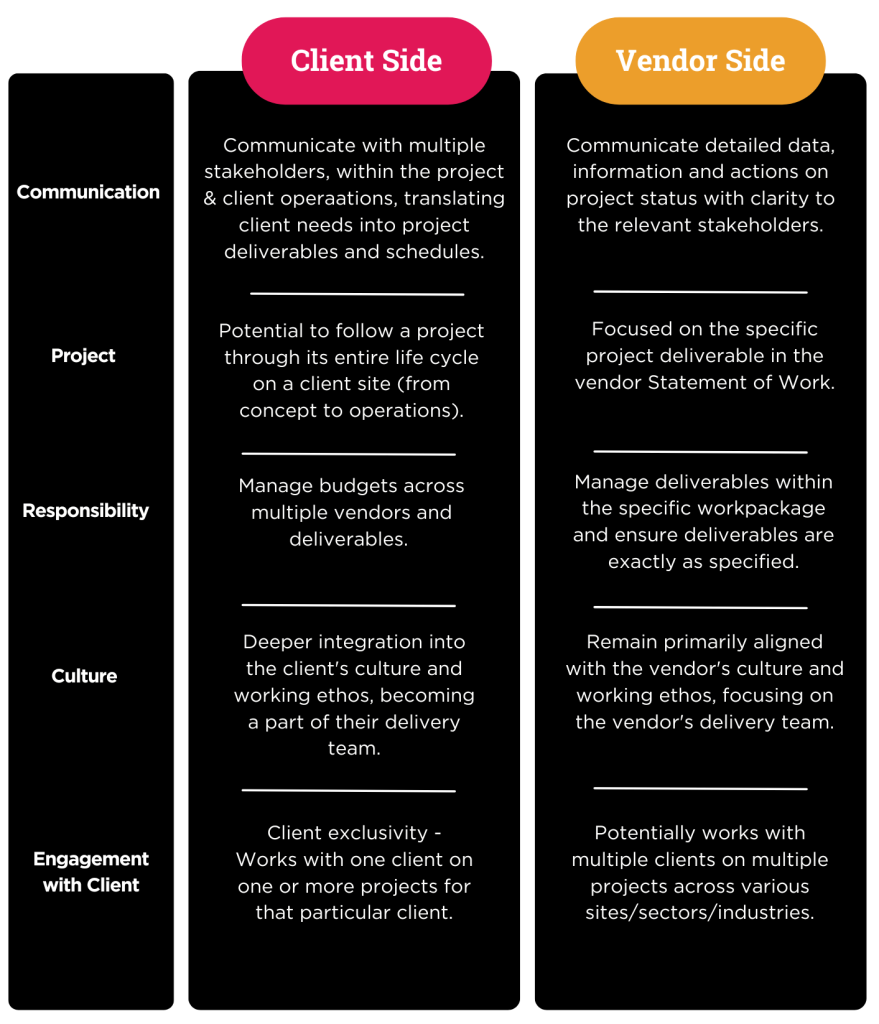In the life sciences sector, consultants and contractors play crucial roles in helping organisations develop and implement projects. When it comes to supporting projects, professionals typically have two options: working on the client side—within a pharmaceutical company, biotech firm, or medical device company—or on the vendor side, with service providers like contract manufacturing organisations (CMOs) or consulting firms.
At LSC, we specialise in resourcing for our client side projects. But what exactly does that mean in practice?
Essentially, it means that our consultants are embedded on-site with our clients, reporting directly to the Manager at that location, while we handle their pay / invoicing, and provide ongoing support throughout their contract. We consider them part of the LSC team, but their day-to-day work is fully integrated with the client’s operations.
One question we often get is: what’s the real difference between working on the vendor side and the client side? You’ll frequently see roles with the same title and technical requirements, but some specifically ask for client side experience. So, what sets them apart?
Let’s take a look at some of the key differences:
Working on the client side in life sciences means engaging with various stakeholders to translate their needs into project deliverables. This role involves deeper integration into the client’s culture, managing vendors, budgets, and multiple deliverables, often through long-term projects. It offers opportunities for permanent positions but comes with intense demands and frequent meetings.
On the vendor side, professionals provide specialised services to multiple clients, usually in smaller teams. The work is project-focused, usually working from a Statement of Work (SOW) with clear deliverables and less integration into the client’s overall operation. Vendor roles are more stable and structured but may lack broader involvement.
Client side work offers deeper company involvement but requires managing a heavier workload and more meetings. On the other hand, vendor side roles provide stability and focus but less integration with the client’s operations.
Here some more differences:

Why Client Side Experience?
Some clients specifically seek client side experience due to the need for well-rounded professionals who can communicate effectively, manage diverse teams, and adapt to various project requirements, highlighting the importance of versatility in these roles.
However, both client side and vendor side experiences offer valuable skills and insights. Ultimately, the choice depends on your career goals and the type of experience you’re seeking.
